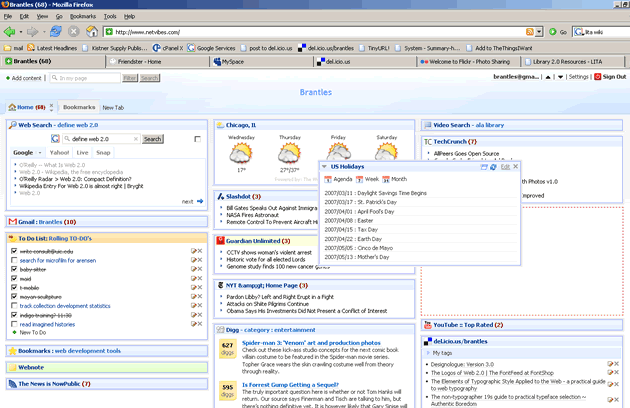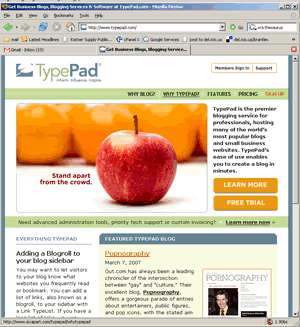Over the last few years, the Technorati of the blogosphere have described Web sites featuring certain characteristics as being part of "Web 2.0."
This morning I will provide an explanation of what is meant by Web 2.0, and a discussion of the opportunities that Harrington College of Design, and more specifically the Harrington Library has, to leverage Web 2.0 technologies for the benefit of students and faculty.
This presenation was created entirely with the use of Web 2.0 services. I am using my instruction blog, entitled "Making info Make sense" as the presentation platform. As long as my internet connection holds out, we will be in good shape. (Now is the time to cross your fingers.)The term Web 2.0 describes Web sites and Web services that provide:
- a rich user experience
- a high level of control over the look and feel of the interface
- and a platform for the creation of content rather than just the consumption of content.

Web 2.0 sites you may be familiar with include
Friendster,
MySpace,
Facebook, and other
social networking sites where individuals chat, gossip, flirt, conference, listen to music, and network.
Blogging software and blogging hosts like
typepad or
wordpress or
blogger are also considered Web 2.0, as are Wikis, or, editable pages also called the "read/write Web."



Social bookmarking sites like Del.icio.us, and photo sharing sites, like Flickr and photobucket, provide far more than simply free storage and web access to your images.
They create environments where the users direct the activity.
One does not register with these sites merely to observe.

The thread that binds all of these sites and services together is the participation of the users.
Widespread participation at the user end requires a leap of faith by the Internet companies that host the services. It means that control over the site content is decentralized.
It is a fairly radical paradigm shift in business to turn over the reigns of control to your customers, but sites like YouTube have done it profitably.
The user generated content is not limited to text. Text, images, graphics, video, music, and software are all examples of the kinds of content shared and collaborated on, but in addition, massive quotation of other users' content occurs frequently and provides material for new creative works.
The users of Web 2.0 technologies make their critical voices heard through discussion boards, comments to blog posts, and by rating, sanctioning or flagging poor or inappropriate content.
 One of the most important aspects of the Web 2.0 phenomenon is the power of the user to organize information via natural language tags.
One of the most important aspects of the Web 2.0 phenomenon is the power of the user to organize information via natural language tags.
This shift of control over information can be exemplified by comparing tags to traditional subject headings, descriptors, or thesaurus terms.
The latter are controlled vocabularies as opposed to tags which are commonly called folksonomies and are generated by the user to describe information intuitively and personally.
So what if you are a skeptic? Let us say you are not as much of an advocate as I am and you consider Web 2.0 to be about amatuerism, not high quality; entertainment and not learning.What does this evolution of the World Wide Web have to do with the library?
One might think the library world would be resistant to giving over the classifying of information to anyone and everyone.
Traditionally, libraries are physical spaces where students gather to research, discuss and collaborate. More recently, libraries have also become virtual spaces offering access to information in a variety of formats.
What Web 2.0 offers libraries is the opportunity to collapse the physical distances between the users and the information they need, and to
blur the boundaries between the social sphere and the academic sphere as discreet spaces for discourse.
By implementing Web 2.0 technologies, we can provide tools that help students make the connection between the online access to library resources and the collaborative social software of which they already make great use.

This Chart accessed 3/8/07 from Tim O'Reilly's article "What Is Web 2.0Design Patterns and Business Models for the Next Generation of Software."
http://www.oreillynet.com/pub/a/oreilly/tim/news/2005/09/30/what-is-web-20.html
Labels: ajax, folksonomy, libraries, user content, web 2.0









